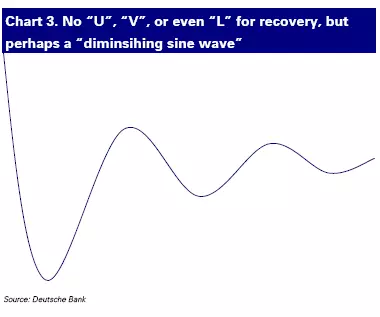
The coronavirus pandemic has affected many industries - we wrote extensively about it on our blog. Several hundred million people around the world have lost their jobs. Global GDP has declined so severely for the first time since the Great Depression. One and a half billion students worldwide have been affected by the closure of schools and universities. The long-term economic impact of the crisis in many countries has yet to be assessed.
Stanford University history professor Walter Scheidel wrote an article for Foreign Affairs comparing the economic impact of the Spanish flu, which the world faced in the early 20th century, and the current situation. Why did the pandemic not have such a severe impact on the economy a century ago, and what might the recovery look like now?
How the Spanish flu influenced the economy
It may sound surprising, but the economic impact of the Spanish flu pandemic has been far less dramatic than the current crisis. In the United States, industrial production collapsed briefly, but recovered within a few months. The retail industry was virtually unaffected, and the number of businesses that went bankrupt did not greatly exceed the usual time. According to modern analytical data, the US GDP in 1918-19. decreased by no more than 2%, the same can be said about the economies of Western European countries.
At the same time, according to some reports, the Spanish flu was more deadly than the coronavirus. In the United States alone, he killed at least 550 thousand people - 0.5% of the total population. Adjusted for the growing population of the country, today such losses would result in just under 2 million deaths. The situation outside the industrially developed countries was even worse. In total, 40 million people died from the Spanish flu, 2% of humanity - in today's figures, this would be 150 million deaths.
What is important: the Spanish flu, like the epidemics of cholera and other diseases, carried quite understandable risks for the inhabitants of the planet. At the same time, at that time the rich and the poor had almost the same risks of getting sick.
What has changed today
Over the past hundred years, humanity has made a big step forward. Antibiotics, medicines for many diseases appeared, social security systems were built, life expectancy and quality of life increased significantly throughout the world.
The rising standard of living also had side effects, such as financial stratification. And during a new pandemic, it turned out that when states around the world are forced to close their economies and, in fact, destroy resources, the conditional rich and poor no longer face the same risks as a hundred years ago.
Today, there are people whose work is technology-related or can be done from home, and those who are forced to face people face to face even at the peak of the wave of infection.
At the same time, the “value of life” in the world has grown in any case - both morally and economically. In the United States, this parameter is approximately $ 10 million . Therefore, the authorities around the world and go to such strict quarantine measures and re-introduce them in case of outbreaks of infection.
What recovery will look like in the end
The world a hundred years ago and now is too different. That is why, despite significant advances and advances in medicine and the economy, the consequences of the coronavirus pandemic will be longer and more severe than during the more deadly Spanish flu.
According to Bloomberg, many economists are gradually losing faith in the implementation of the scenario with a fast V-shaped timeline of the global economic recovery. Instead, they involve recovery in a ragged rhythm. As a result, it will not be a graph in the form of the letter V, U or L. Here is how the experts of Deutsche Bank see this graph:

Such a schedule assumes a gradual fall, and then recovery in several leaps - this will be facilitated by the gradual easing of quarantine measures. Also, the situation will be affected by a decrease in demand in the economy, since people will save more. This recovery scenario is one of the most likely.
Read reviews, market analytics and investment ideas in the ITI Capital Telegram channel
Useful links on investment and exchange trading:
- Open a brokerage account online
- Test account with virtual money
- Stock trading software: trading terminal, mobile applications
- Structural Products
- Model portfolios